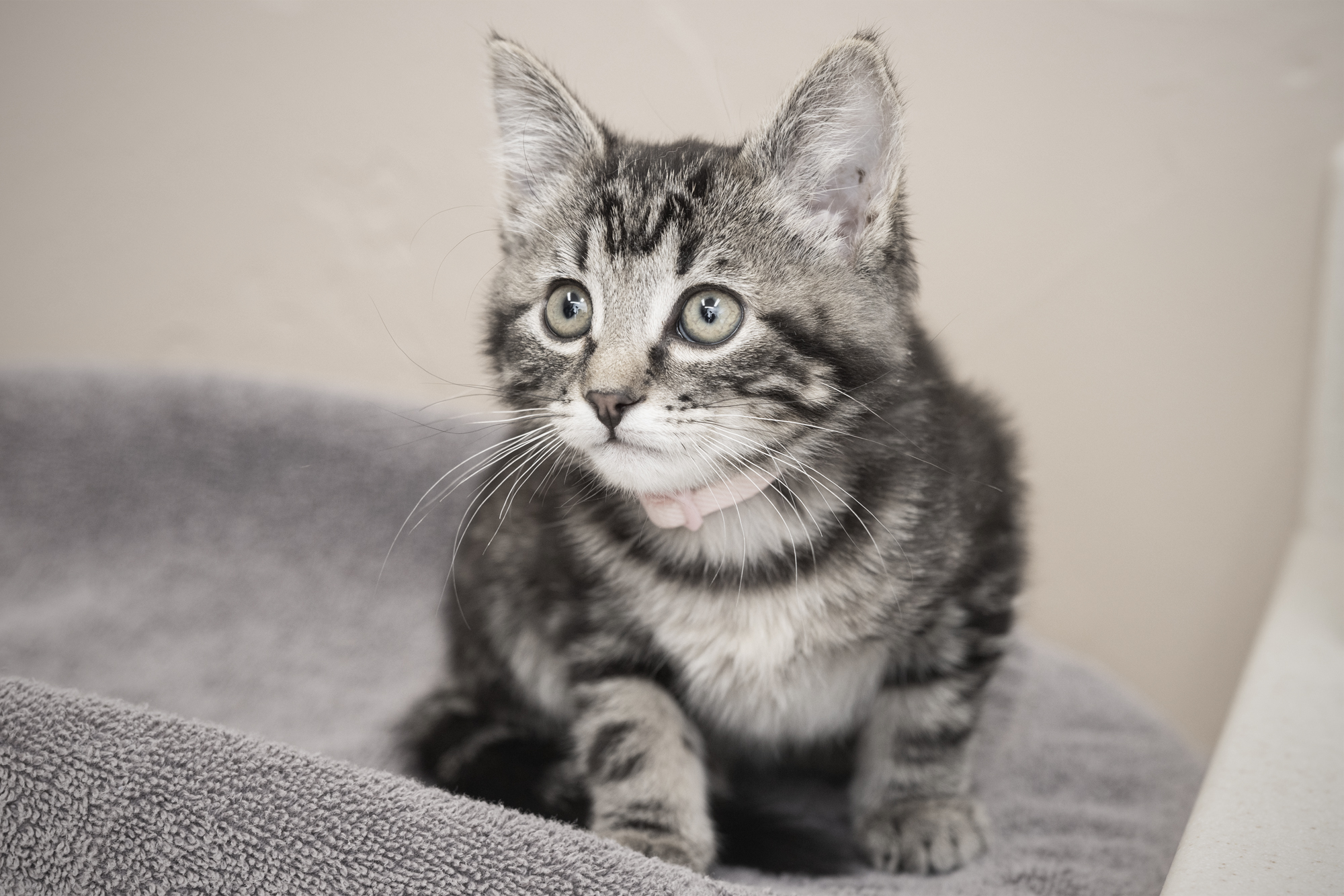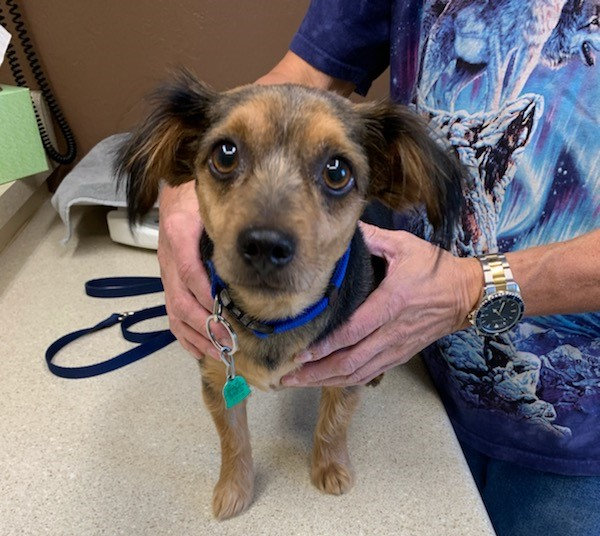
Meet “Miller”. He is a very sweet, 2 yr 7mo old Neutered Male Terrier mix who came to see us for bad breath and visible tartar. He was rescued by his current owner a few months ago so nothing is known about his dental history.
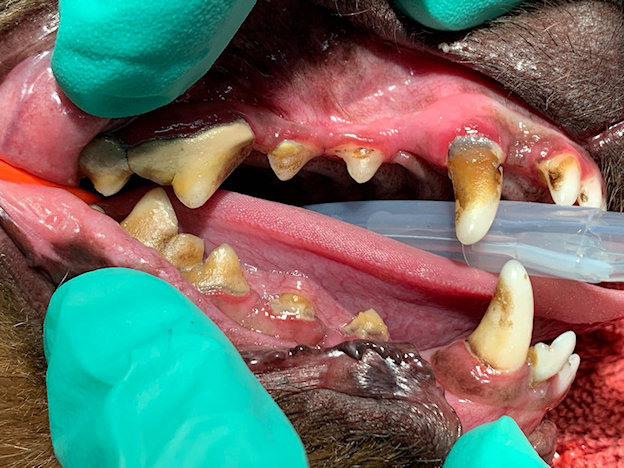
Upon presentation “Miller” had pre-anesthetic lab work and a physical exam which were both unremarkable. Besides his poor dental hygiene “Miller” appears to be in very good health. After we anesthetized him and placed a breathing tube we began is dental exam.
You can see from the photo that he has large tartar deposits and moderate gingivitis around all of his teeth with more advanced periodontal disease on his top back teeth and top k9 teeth. Radiographs confirmed that “Miller” had several teeth in end-stage periodontal disease as expected based on the visual exam. But the reason “Miller” made our list of interesting cases is because of what we didn’t expect.
The following radiograph of the right mandible shows a tooth deformity known as convergent roots. There is no structural problem with the roots converging, but this particular deformity is often accompanied by abnormal creases in the tooth known as enamel or dentin invagination and these teeth have a high rate of endodontic infection.
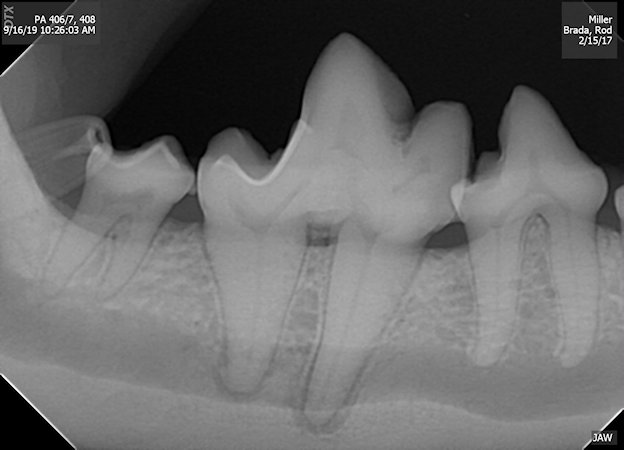
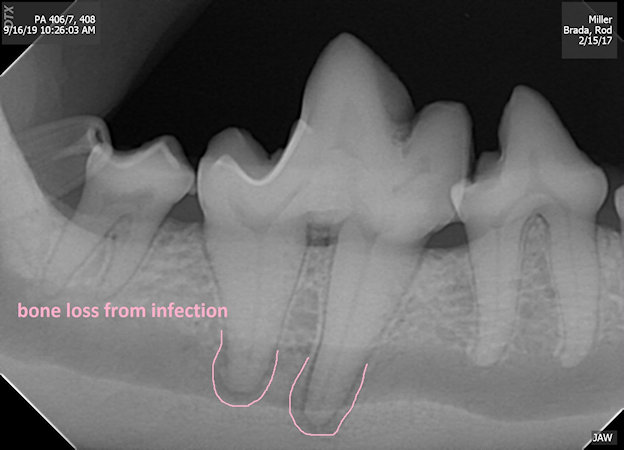
You can barely make out black halos around the root tips of this tooth making us very suspicious of endodontic disease.
Looking closer as seen in the next radiograph we could also see what appears to be a large crease extending from the outside of the tooth into the pulp chamber between the roots (red arrow). In a normal tooth we only expect there to be 1 port of entry into the pulp chamber, located at the tip of each root (yellow arrows).
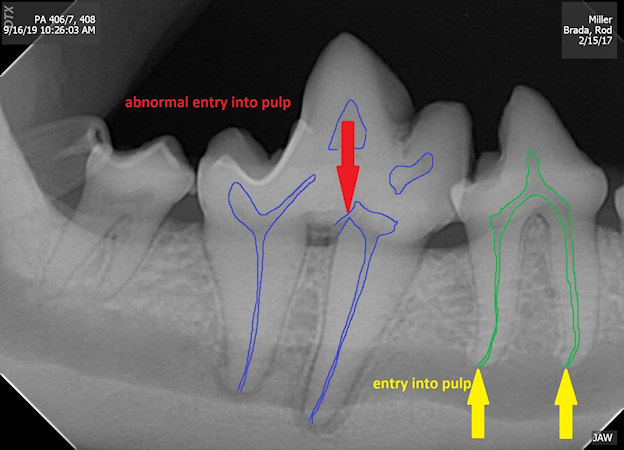
This condition, known as “dens invaginatus” is usually present on both right and left sides, which was the case with “Miller”. The next radiograph is from the left mandible showing the same pathology but in a more advanced state.
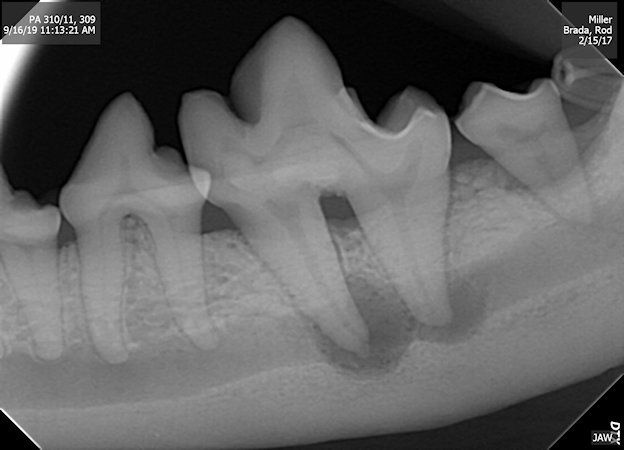
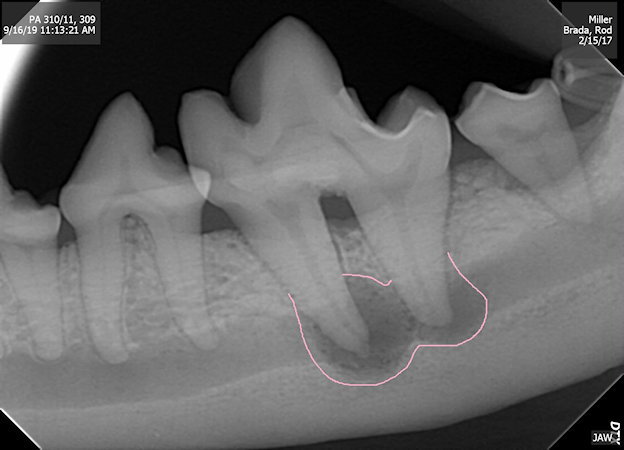
Both of these teeth were surgically removed and the left tooth is shown on cut surface in the photo below.
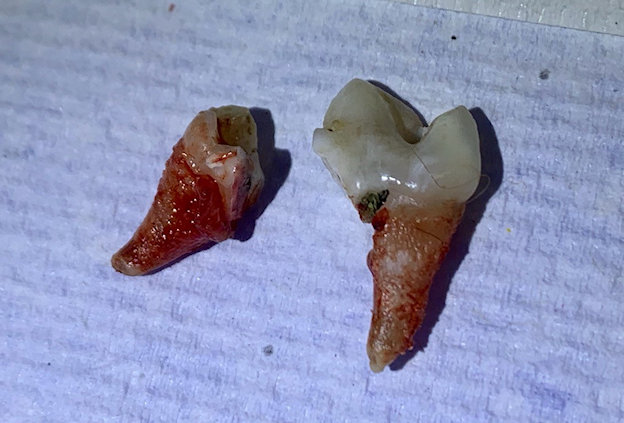
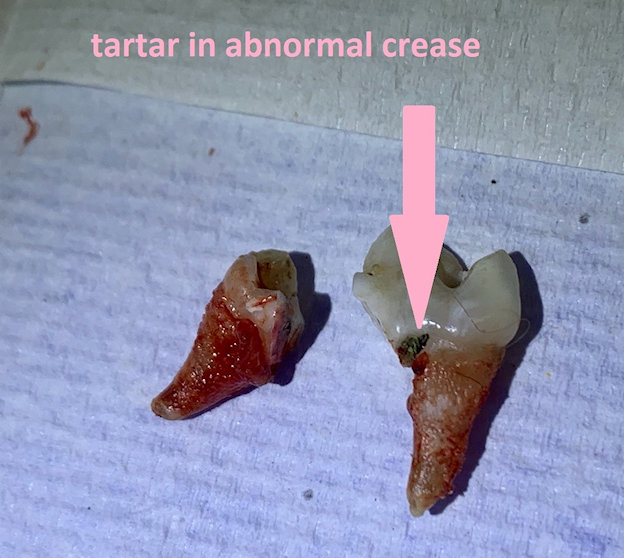
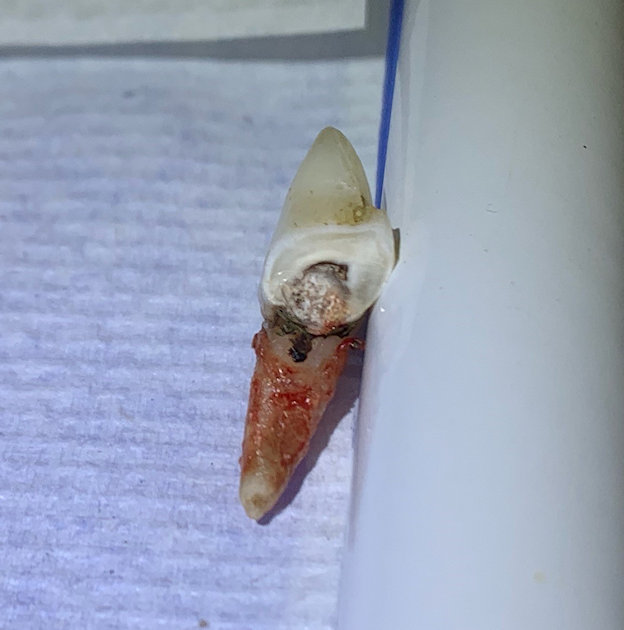
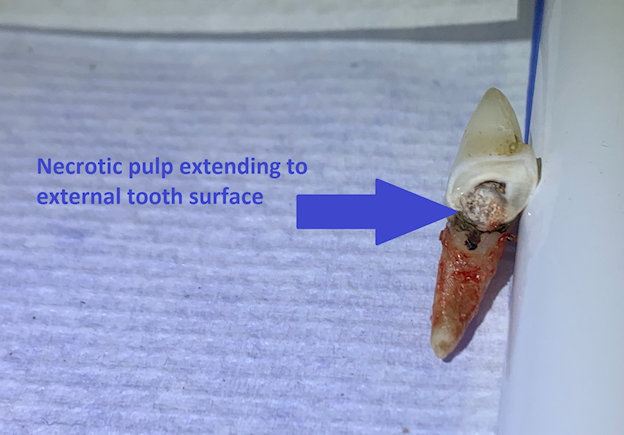
Miller is so much happier now without his abscessed teeth and this is another example of why we radiograph every tooth every time we do a dental hygiene procedure. Without doing so we would have left this sweet boy with 2 painful throbbing jaw abscesses.
